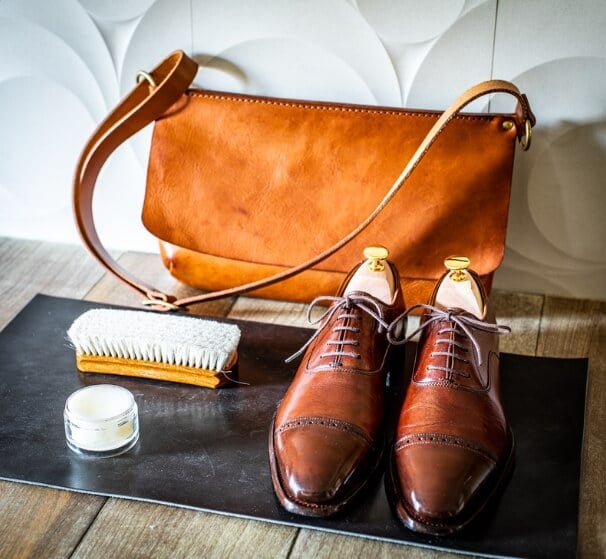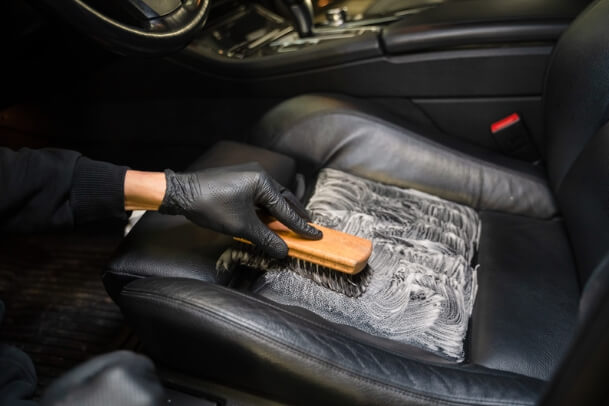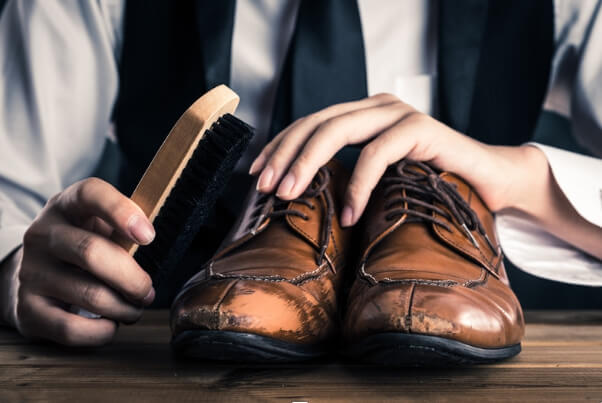The Complete Guide to Leather Care: Cleaning, Conditioning, and Maintaining (with FAQ)
hjere!!!Ah, the world of leather—a realm of timeless elegance and craftsmanship.
Whether it’s achieving the perfect patina for your leather apparel, minimizing unsightly scuffs on your car interior, or protecting boat upholstery from the elements, mastering the art of leather care is your ticket to preserving them.

Leather needs love to last.
Like anything we cherish, our valued leather items often fall victim to over-use. The good news is that when properly cared for, your well-worn purses, leather furniture, shoes, saddles, or anything else can actually look and feel better than new leather over time.
Keeping leather surfaces at their best requires three essential steps: cleaning, conditioning, and maintaining. We’ll make each step simple, along with some practical advice in this article. Let’s dive in!
Cleaning is the foundation of caring for your leather
Leather cleaning is the cornerstone of longevity. Regular maintenance ensures your treasures remain free from dust, dirt, and grime.
Using dedicated leather care products right from the start is sure to get you the best results. There are some household remedies that can do the trick, just be careful about which substances you decide to use.
Leather handbags, wallets, and shoes (any apparel, really):

Cleaning your favorite leather clothing and accessories isn’t rocket science. Just be gentle!
- Prep the Stage: Begin by wiping the surface with a clean, dry cloth to remove loose particles. Microfiber cloths are ideal to avoid abrasions.
- Gentle Cleanse: Apply a small amount of leather cleaner onto a soft, damp cloth. Gently rub the surface in circular motions, focusing on stained or soiled areas.
- Spot Check: For stubborn stains, a mixture of mild soap and water can work wonders. Test in an inconspicuous area before applying to the stain directly.
- Air Dry: Allow your items to air dry naturally, away from direct sunlight or heat sources. Patience pays off!
Now, onto a quintessential leather product that is prone to wear and tear over time—the car seats.
Leather car seats and furniture:
You and your passengers/guests get in and out of your leather car seats and furniture thousands and thousands of times throughout their lifetime. So keeping them in tip-top shape will keep the wear and tear to a minimum.
- Dust and Vacuum: Begin by vacuuming your car seats to remove debris. Use a soft brush attachment to prevent scratches.
- Target Stains: Use a leather cleaner to tackle stains. Apply a small amount to a cloth and gently rub, then wipe clean with another damp cloth.
- Crevice Care: A soft toothbrush is your ally for cleaning crevices. Sweep away dirt from seams and edges.
- Dry Delicately: After cleaning, let your car seats or furniture air dry with the windows cracked open to avoid moisture buildup.
Pro tip: Cleaning leather car seats around every three months is a good rule of thumb.
Boat upholstery:
A more niche, but highly-valued corner of the leather care universe is marine maintenance.
- Brush Away Debris: Employ a soft brush to remove dirt, salt, and debris from your boat upholstery.
- Oceanic Cleansing: Apply a marine-grade leather cleaner to a cloth and gently clean the surface. Rinse with clean water if necessary.
- Thorough Drying: Allow your boat upholstery to dry naturally in a well-ventilated area. Never use direct heat sources.
A boat is a major investment that delivers a lot of passion and joy. So upkeep is super important. Fibrenew specializes in boat upholstery repair and renewal. Something to keep in mind!
Conditioning nourishes the soul of leather treasures
Conditioning is the next fundamental step in caring for leather.

Just like your skin needs moisturizer, leather needs conditioning to maintain its luster and flexibility. This is arguably the most important step in ensuring your leather items last as long as they can and look incredible the entire time.
- Choose Wisely: Select a high-quality leather conditioner suited for your specific leather type. Different leathers need different leather protectors.
- Test the Waters: Apply a small amount of conditioner to an inconspicuous area first to ensure compatibility.
- Even Application: Use a soft, clean cloth to gently apply the conditioner in circular motions. Focus on well-worn areas and avoid excessive application.
- Absorb the Love: Let the conditioner sit for the recommended time, allowing the leather to absorb the goodness. Quality leather creams and sprays will keep leather moisturized and soft.
Regular cleaning and conditioning are the heavy lifting tasks when it comes to leather care. After that, it’s all about keeping up with best practices to ensure your leather care efforts don’t go to waste.
Maintaining leather is longevity’s best friend
Maintenance ensures your leather items remain vibrant and resilient over time. Get into these habits and you’ll be sure that you maximize their value.
- Protect from Elements: Store your leather items away from direct sunlight and moisture. Use protective covers when needed. Waterproofing with silicone-based sprays works well too.
- Rotate and Rest: Give your leather items a break. Avoid using the same leather bag or shoes every day to extend their life.
- Regular Touch-Ups: Periodically repeat the cleaning and conditioning process to keep your leather items in top shape. Keeping a leather care kit on hand is a great idea here.
- Professional Love: For intricate or delicate leather items, or to breathe new life into any damaged leather product, consider professional cleaning and restoration services (Fibrenew, anyone?).
Your cherished leather items can serve you a lifetime
Imagine your leather items evolving with age, gaining character and depth. With proper care, your leather apparel, car seats, furniture, and boat upholstery will continue to radiate beauty for years to come. By following these simple cleaning, conditioning, and maintenance steps, you’re investing in a product that could serve you a lifetime.
Step into the role of a dedicated caretaker, and watch as your leather treasures thrive in your attentive hands. The journey of leather care is a satisfying one, leading you to a world of lasting elegance and genuine appreciation for craftsmanship.

Leather care tips FAQ
How often should I clean and condition my leather items?
The frequency of cleaning and conditioning depends on usage. Generally, it’s recommended to clean and condition leather items every 3-6 months to maintain their quality and appearance.
Can I use water to clean my leather?
What’s the best way to remove stains from leather? For small stains, gently blot with a clean, damp cloth. For tougher stains, use a specialized leather cleaner. Always test cleaners in an inconspicuous area first.
How do I prevent leather from drying out and cracking?
Regular conditioning with a leather conditioner or cream helps maintain moisture and prevents cracking. Avoid exposure to direct sunlight and extreme heat, as they can dry out leather.
Can I use household products like olive oil to condition leather?
It’s best to use products specifically designed for leather care. Household products can cause damage and might not be suitable for all types of leather. Olive oil is a big no-no, as well.
How can I store leather items when not in use?
Store leather items in a cool, dry place away from direct sunlight. Use a breathable dust bag or cover to protect them from dust and scratches.
My leather got wet. What should I do?
If your leather item gets wet, gently pat it dry with a clean cloth and let it air dry at room temperature. Avoid using heat sources like hair dryers, as they can cause the leather to become brittle.
How can I remove a scratch from leather?
Minor scratches can often be buffed out with a soft cloth. Deeper scratches may require professional help. Avoid using abrasive materials or excessive force, as this can worsen the damage.
Can I use shoe polish on leather bags or furniture?
Shoe polish is formulated for shoes and might not be suitable for other types of leather items. It’s safer to use products specifically designed for bags, furniture, or other leather goods.
How do I maintain the shine of my leather items?
Regular cleaning and conditioning help maintain the natural shine of leather. Use a leather conditioner with a mild polishing effect to enhance the shine.
Can I iron or steam leather wrinkles?
Avoid using irons or steamers on leather, as heat can damage the material. Wrinkles often smooth out naturally with time and proper care.
How do I clean suede or nubuck leather?
Suede and nubuck require specialized care. Use a suede brush to remove dirt and a suede eraser for stains. Avoid moisture, as it can ruin the texture. Consider a protective spray for these types of leather.
My leather smells. What can I do?
If your leather item has an unpleasant odor, let it air out in a well-ventilated area. Avoid using strong fragrances, as they can interact with the leather and cause further issues.
Can I wash leather in a washing machine?
Leather should never be washed in a washing machine. Water and agitation can damage the leather’s structure. Stick to gentle hand cleaning and conditioning.
Remember that different types of leather might have specific care requirements, so always refer to the manufacturer’s recommendations when available. If in doubt or for more intricate issues, consult a professional leather care specialist.
Passionate about leather care?
Becoming a Fibrenew franchisee might be right for you!
Get in touch today, and stay tuned!

